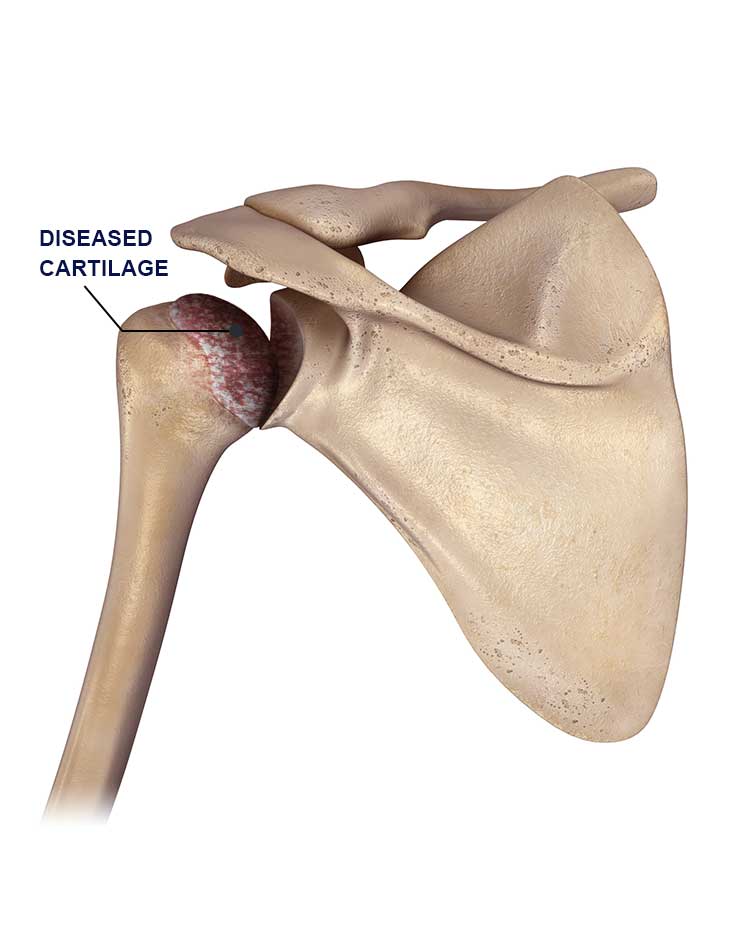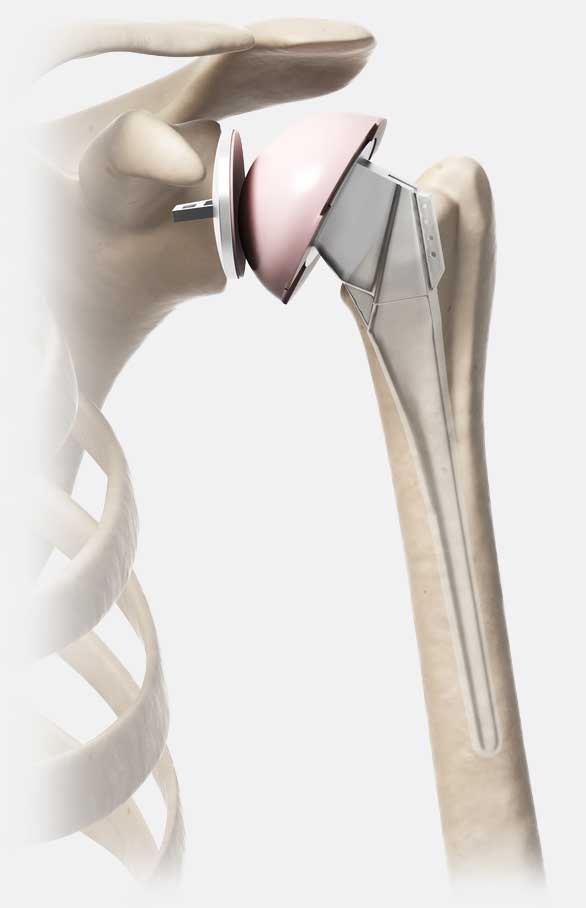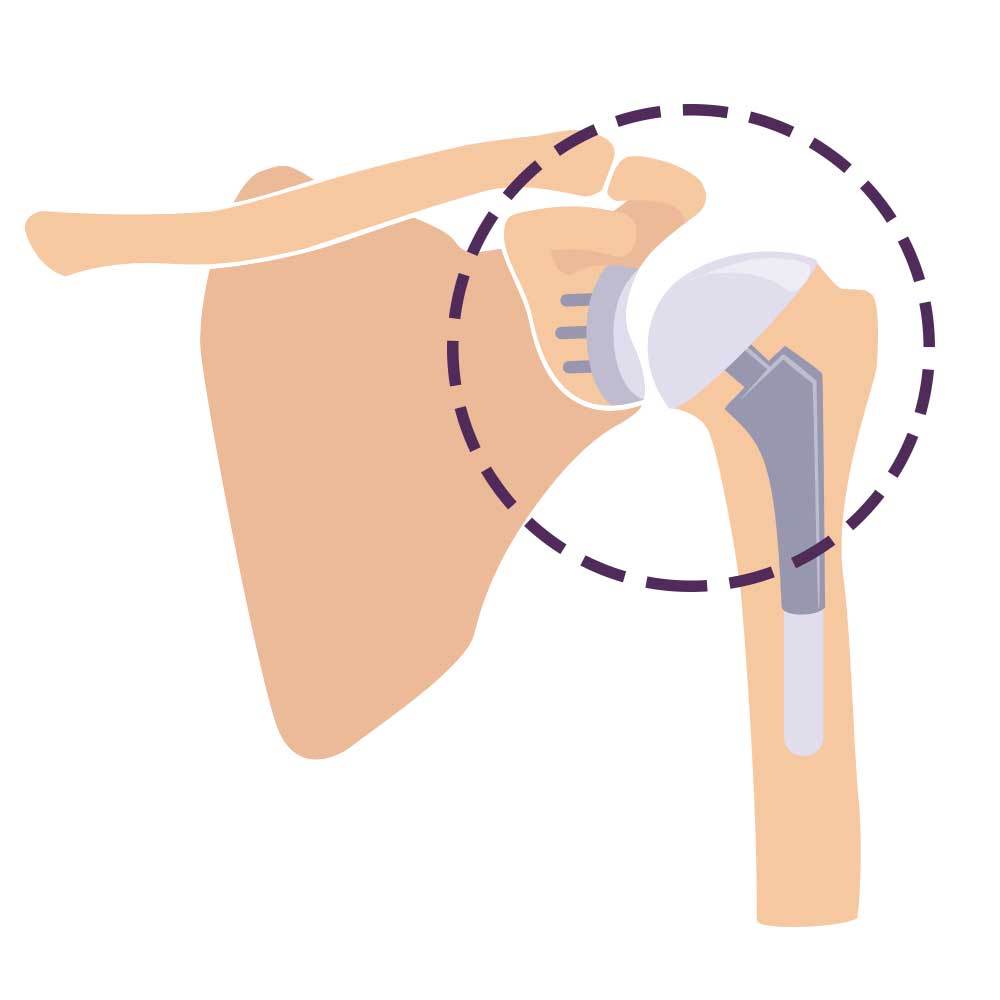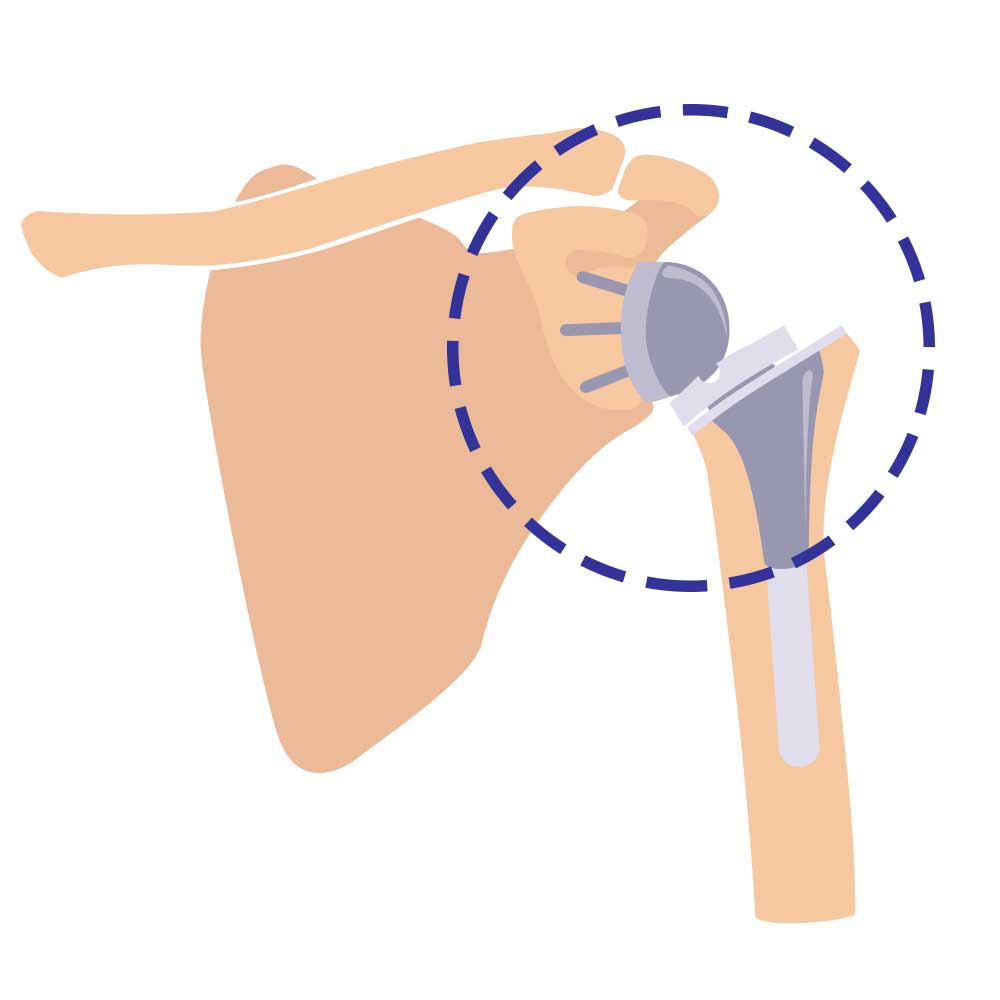Shoulder Replacement Surgery
Diagnosis and treatment of shoulder pain
Each patient is unique, and can experience shoulder pain for different reasons. It’s important to talk to us about the reason for your shoulder pain so you can understand the treatment options available to you.
Arthritis — Arthritis, including osteoarthritis, is one possible reason for shoulder pain. Pain from arthritis or joint degeneration can be constant or come and go, occur with movement or after a period of rest, or be located in one spot or many parts of the shoulder. If you haven’t experienced adequate relief with medication and other conservative treatments, total shoulder replacement may provide you with relief from your arthritis.
Instability & Injury — Sometimes the bones of the shoulder joint move or sometimes are forced out of their normal position, which leads to an injury. This instability can result in a dislocation of the shoulder joint. Recurring dislocations, which may be partial or complete, cause pain and unsteadiness when you raise your arm or move it away from your body. Severe fractures to the bones within the shoulder are another consideration when diagnosing shoulder pain and determining the candidacy for shoulder replacement surgery.


Total Shoulder Replacement
A surgical solution to shoulder degeneration
Shoulder replacement surgery has been around for decades and was originally used for severe fractures, but because of its success, it has since broadened to treat arthritis and other shoulder joint degeneration. Today, about 53,000 people in the United States have shoulder replacement surgery each year, according to the Agency for Healthcare Research and Quality. Patients with bone-on-bone contact, where the cartilage within the joint has eroded do to injury or arthritis, are typically good candidates for shoulder replacement surgery.
During shoulder replacement surgery in Fort Worth, an artificial ball and socket joint is installed into the shoulder, replacing the damaged joint. The artificial ball and socket joint is designed to closely replicate the natural motion and function of the original joint.
Shoulder replacement surgeries in the U.S. each year
Patients who returned to at least one sport1
Patients satisfied with surgery1
One recent study, presented at the annual meeting of the American Academy of Orthopaedic Surgeons (AAOS), found that "96.4% of recreational athletes, age 55 and younger, who underwent total shoulder replacement surgery returned to at least one sport, on average, within seven months of surgery."1 This same study also found that 93% of patients were satisfied with the outcomes of their shoulder replacement surgery.
Reverse Shoulder Replacement
When traditional shoulder replacement is not an option
Reverse shoulder replacement is another variation of shoulder joint replacement. Reverse shoulder replacement is performed on patients with completely torn rotator cuffs or those who have had a shoulder replacement surgery in the past that did not relieve symptoms or significantly restore motion back into the shoulder.
In a healthy, natural shoulder joint, the rotator cuff is responsible for stabilizing the shoulder ball and socket, holding the two components together to form the functional joint and enabling a person to lift and rotate their arm. A traditional shoulder replacement needs the original rotator cuff to make the new joint function properly.
In reverse shoulder replacement surgery, the position of the ball and socket are “reversed” where the ball is applied to the shoulder socket and the plastic socket is attached to the upper arm. By reversing the components, the person is able to stabilize and maneuver the arm without the use of the rotator cuff, instead relying on the deltoid muscle to do the job.
Traditional Shoulder Replacement VS. Reverse Shoulder Replacement:
Traditional Replacement

Reverse Replacement

IMPORTANT INFORMATION
The information presented is for educational purposes only. Speak to your doctor to decide if joint replacement surgery is right for you. Individual results vary and not all patients will receive the same postoperative activity level. The lifetime of a joint replacement is not infinite and varies with each individual. Your doctor will help counsel you about how to best maintain your activities in order to potentially prolong the lifetime of the device. Such strategies include not engaging in high-impact activities as well as maintaining a healthy weight.
Content copyright Medingenuity LLC.
References
- Garcia, G., Liu, J., Sinatro, A., Wu, H., Dines, J., Warren, R., Dines, D. and Gulotta, L. (2017). High Satisfaction and Return to Sports After Total Shoulder Arthroplasty in Patients Aged 55 Years and Younger. The American Journal of Sports Medicine, 45(7), pp.1664-1669.

